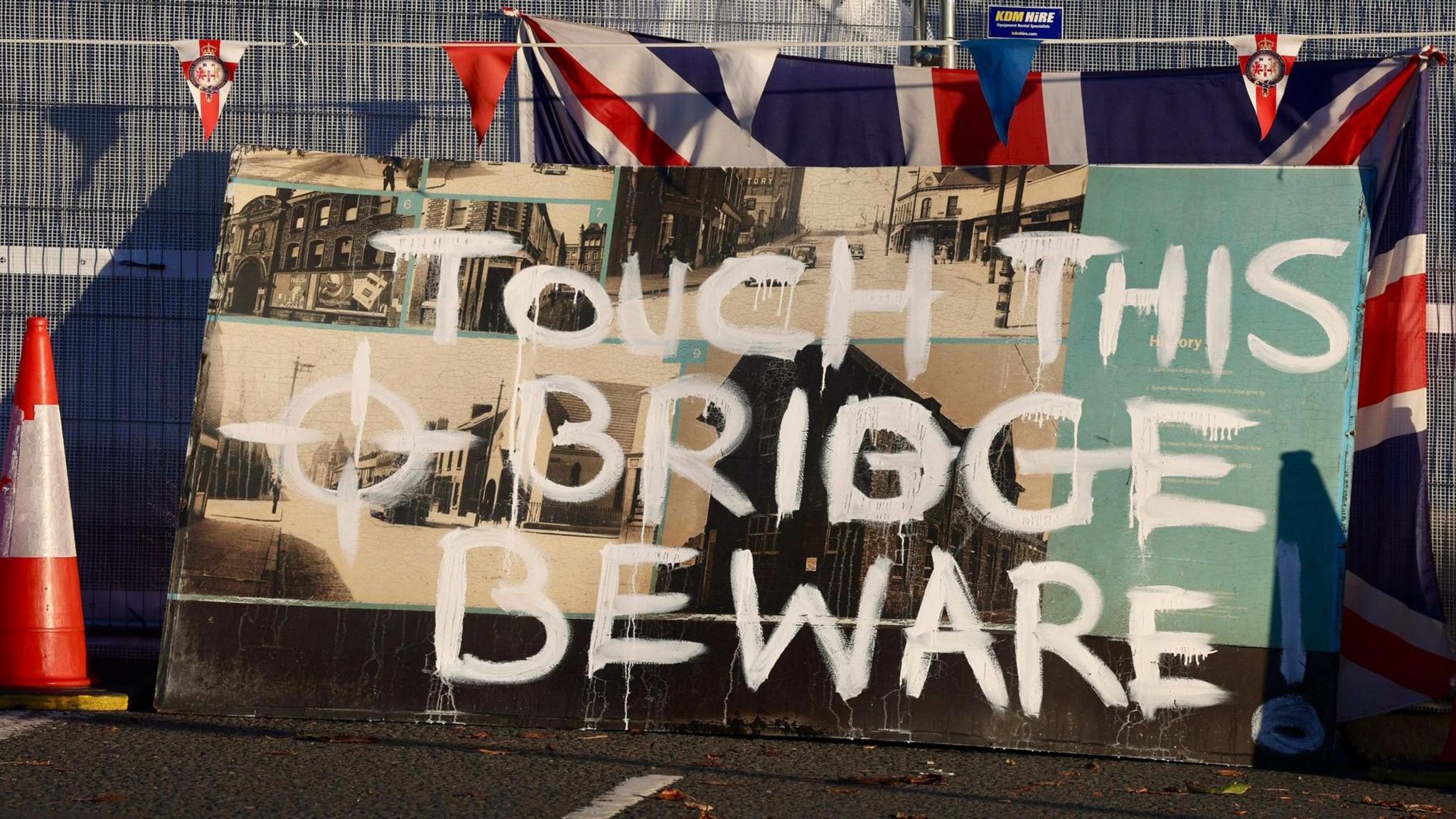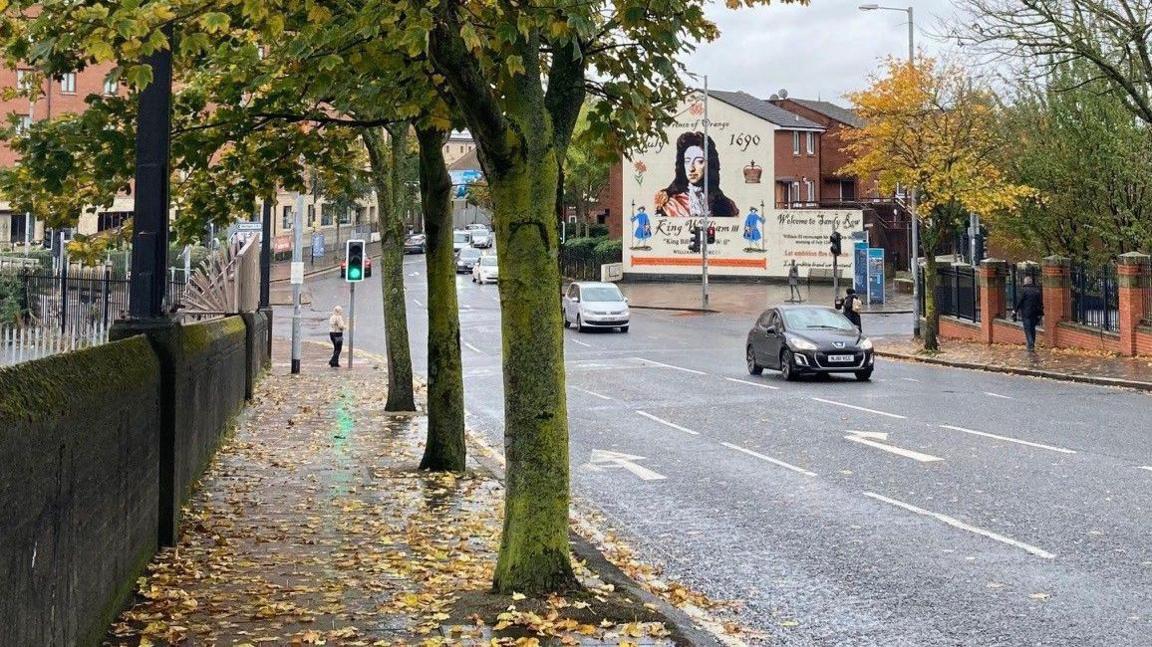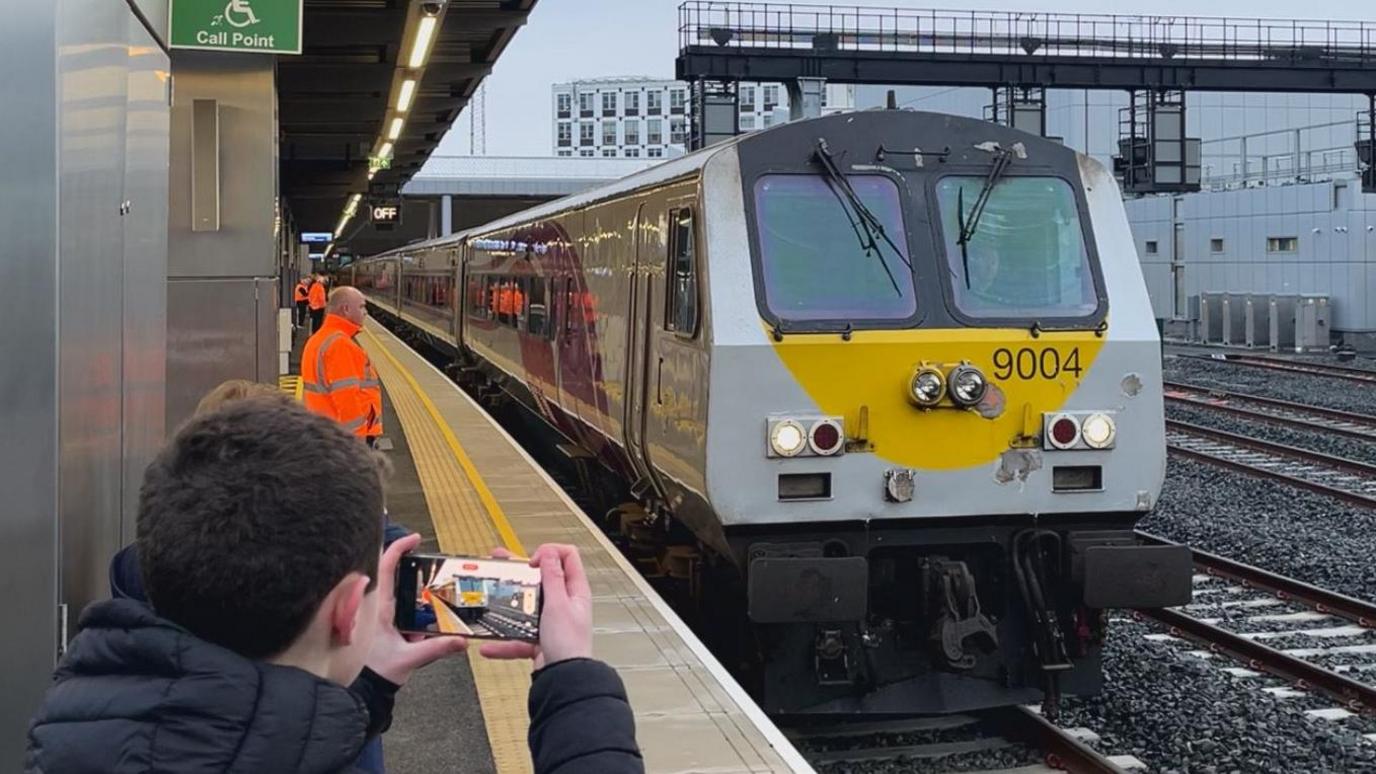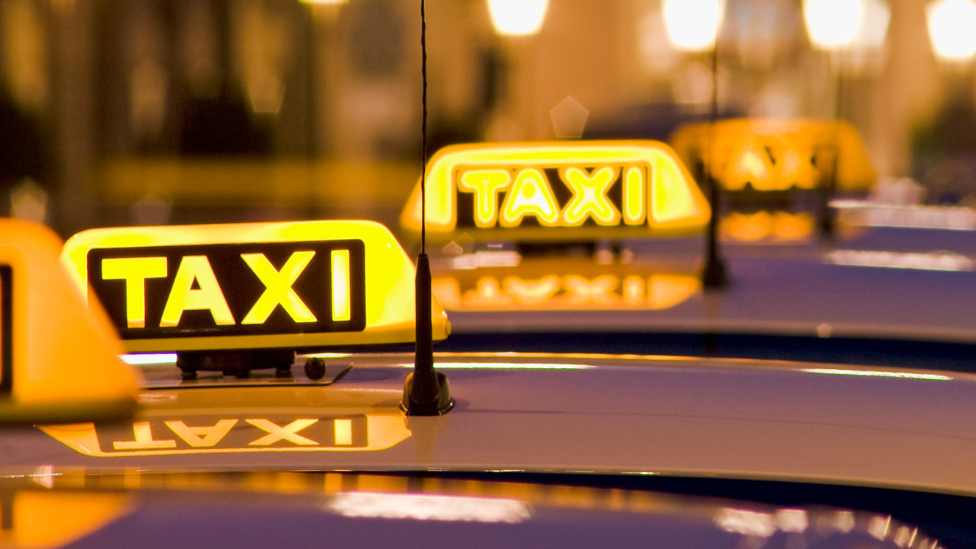Try public transport to avoid traffic, says O'Dowd

John O'Dowd said people who can use public transport should try it
- Published
Car drivers complaining about the increase in traffic congestion in Belfast have been told to consider switching to public transport.
The call came from the Infrastructure Minister John O’Dowd, who oversees bus and rail services in Northern Ireland.
The year-long closure of Durham Street, a busy road in central Belfast, has led to fears of more congestion in the city this week.
The minister is hoping the start of rail services on Sunday from the new Grand Central Station in the city will encourage more people to use public transport.
However, the redevelopment of the area surrounding the new station is blamed by many drivers for causing the traffic problems in the first place.
'Investment for the future'
'A hugely significant day for public transport'
O’Dowd told BBC News NI he could understand drivers' frustration of drivers with work that was ongoing.
“The investment we are making is about the future," he said.
“If you are in your car, ask yourself the question: 'Can you use public transport?'.
"I think you’ll be pleasantly surprised if you board one of the trains, or one of the buses," he said.
O'Dowd said he accepted public transport was "not an option for everyone" but encouraged those that could to try it.

Trains started running from Belfast's Grand Central Station on Sunday
Get in touch
What are your experiences of public transport in Northern Ireland?
Are taxis allowed in bus lanes?
There has been calls for more clarity from the minister from taxi drivers surrounding the plans for more vehicles to be allowed in Belfast bus lanes.
Stephen Anton from Fonacab said that taxi operators had requested the move ahead of planned roadworks.
"Whenever we knew the congestion was coming again, it was something we asked the department for," he told BBC's Good Morning Ulster programme.
He said there has been "limited communication" and "no more formal information" other than what has been publicly reported.
Mr Anton also highlighted the confusion that could occur as a result of the planned rule changes.
"This will be a problem because any driver that is driving perhaps down Great Victoria Street, may think, 'okay, I can use the bus lane, but can I use the bus lane running up to City Hall?'
“More clarity is needed in terms of exactly what bus lanes we can use and when we can use them, because there’s no start date for when we can use them either.”
Is the Boyne Bridge being demolished?
A threatening sign featuring a target mark was displayed at the Boyne Bridge in Belfast early on Monday in response to the decision to dismantle it.
It had been placed at the Hope Street side of the closure next to Sandy Row on Sunday evening, but has since been removed by police.
A Police Service of Northern Ireland (PSNI) spokesperson said: "We are investigating this report as a potential public order offence."
“As our investigation progresses we will continue to engage with local community representatives and partner agencies," they added.
John O'Dowd previously defended plans by Translink to dismantle the Bridge, in spite of a campaign to preserve it.
The minister promised that elements of the historic bridge would be kept, but said the focus should be on the future not the past.
It was built in 1936 but has its origins in the 17th century at the time of William of Orange.
According to folklore, he rode over the bridge on his way to the Battle of the Boyne in 1690.

Threatening signs appeared on the bridge on Monday morning
The timetable for the removal of the bridge has not been made public but the road on which it is situated, Durham Street, is now closed.
The chief executive of Translink, Chris Conway, indicated the removal would be soon.
“Preparation work is going on at the minute for the Boyne Bridge. We’ve closed Durham Street and we’ll be mobilising the construction teams over the next days and weeks to come, and the dismantling of the Boyne Bridge will come shortly after that,” he told BBC News NI.
He added: “A key part of the dismantling will be under way by Christmas.”
In a statement released on Monday, Translink said it was committed to "preserving and celebrating the history and heritage of the area".
A spokesperson said the company would work with the local community " to repurpose key elements of the bridge for significant artworks to enhance the public realm space in the local area”.

Boyne Bridge is to be dismantled as part of the new transport hub plans
The Ulster Architectural Heritage Society failed in a last-minute legal attempt to stop any work taking place on the bridge.
However, the society is not giving up.
The bridge overlooks the new station, which is now fully operational after Sunday’s start to train services.
Buses started running five weeks ago from the £340m station.
A new train timetable is now in use and passengers have been urged to check it ahead of any journey.
All trains to Dublin from Belfast now start at Grand Central rather than Lanyon Place station.
From the end of October, 15 trains a day will start running each way between Belfast and Dublin on weekdays.
Related topics
- Published13 October 2024

- Published11 October 2024

- Published25 September 2024
